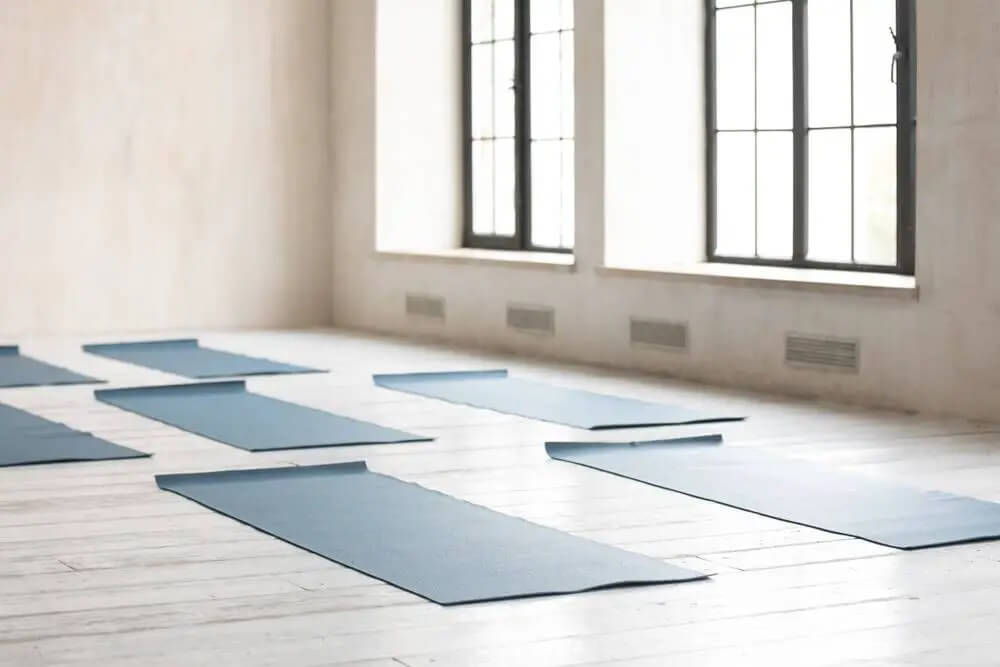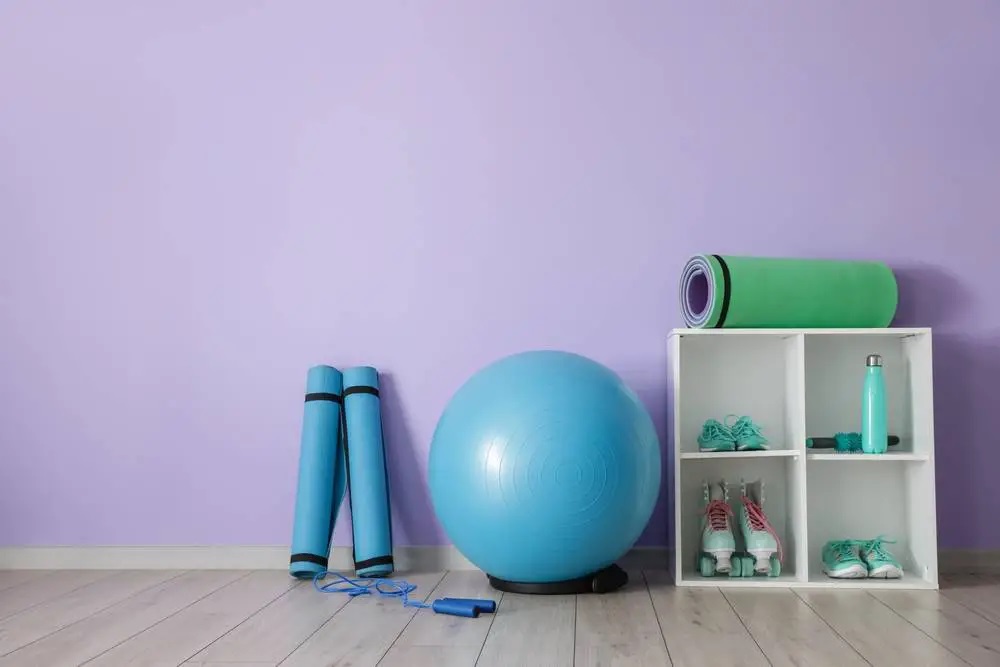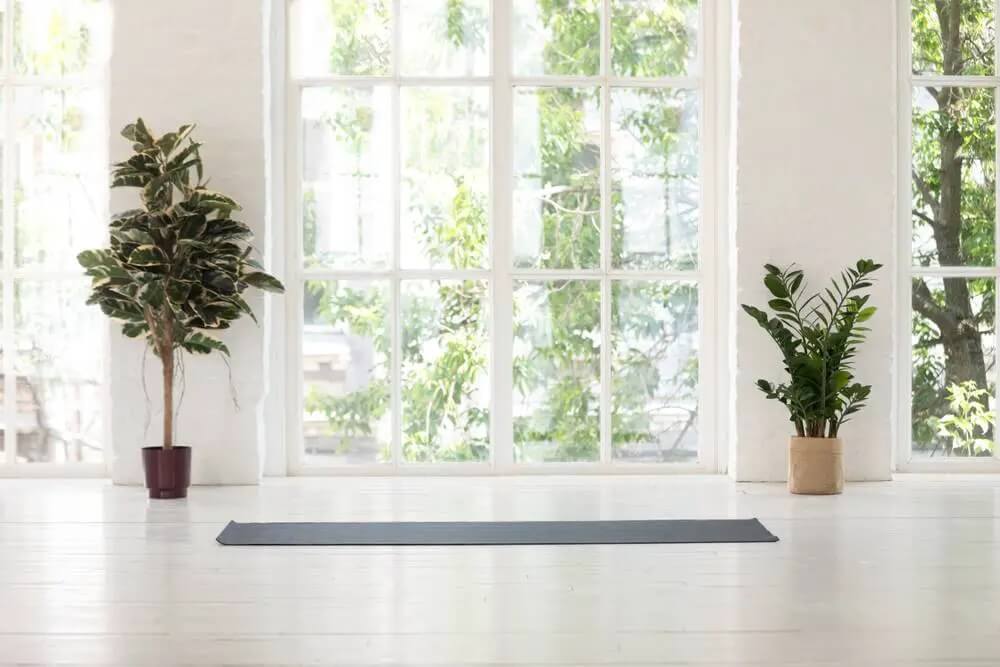The right physical space is integral to making the most of your yoga session. These yoga room ideas will help you foster a sense of peace and tranquility.
Creating a calming and focused space for practicing yoga at home has become increasingly popular as people look for ways to maintain their well-being in the comfort of their own homes. Designing a yoga room or a peaceful corner in your living space can make a big difference in helping you stay consistent with your practice and achieve mental clarity during your sessions.
When setting up a yoga room, there are several aspects to consider, such as lighting, color schemes, and decor, that can help create the perfect atmosphere for relaxation and concentration. Through this article, we will explore various yoga room ideas to help you get started on crafting a serene space tailored to your personal preferences and needs.
Contents
1. Create Your Perfect Yoga Studio Space

When creating a yoga room at home, it’s important to choose a space that provides a sense of tranquility and peace. This can be achieved by selecting a quiet room away from the hustle and bustle of daily life. A spare bedroom, sunroom, or dedicated corner in your living room can all serve as a great location for your personal yoga sanctuary.
2. Choosing The Right Flooring
Finding the perfect flooring for your yoga room is crucial to create a relaxing and inviting space where you can practice in comfort. The right flooring should look great and be practical, easy to clean, and provide the right amount of grip and cushioning.
When selecting a flooring option, consider the following popular options:
- Cork: A natural, eco-friendly material that offers excellent grip and thermal insulation. It is also non-slip and hypoallergenic, making it a popular choice for yoga studios.
- Foam tiles: These can be interlocked to create a custom-sized yoga surface. Foam tiles are easy to clean and provide good cushioning but may not offer the same level of stability as other flooring options.
- Rubber: A durable, non-slip material that provides great cushioning, rubber flooring is suitable for both home and studio settings. It can be purchased in rolls or as interlocking tiles.
- Bamboo: Another eco-friendly option, bamboo flooring is long-lasting and offers natural beauty with its unique grain patterns. However, it can be slippery when wet and may not provide enough cushion for some yoga practitioners.
Keep in mind the type of practice taking place in your yoga room. Hot yoga, for example, may require flooring with better heat resistance and moisture management.
When comparing flooring options, prioritize the following factors to ensure you make the right choice for your space:
- Slip resistance
- Comfort and cushioning
- Easy maintenance and cleaning
- Eco-friendliness and sustainability
- Price and installation costs
3. Select The Right Wall Color To Set The Mood

When designing a yoga room, the right wall colors play a vital role in creating the perfect mood. Consider the psychological effects of colors and choose tones that inspire relaxation and help in the practice of mindfulness.
Many experts suggest shades of purple or violet for yoga rooms, as they can help restore unity between the creative, physical, emotional, inspirational, and intellectual aspects of a person. Light colors such as light green symbolize growth, freshness, and safety, making them ideal for meditation rooms. Soft blues, pale yellows, and whites also work well, as they encourage a sense of peace and tranquility.
4. Choose Atmospheric Decorations
In addition to wall colors, consider incorporating suitable lighting and decorations to enhance the overall atmosphere. This can include dimmable or colored lights, soothing artwork, and even plants that purify the air and contribute to a natural, calming environment.
Some effective design elements for a yoga room may include:
- Room divider screens for privacy or to separate sections within the space.
- A comfortable rug, mat, or cushion for sitting or lying down during relaxation or meditation.
- Essential oil diffusers infuse the space with aromatherapy scents.
- Wall-mounted shelves or storage for yoga props, such as blocks and straps.
- Soothing artwork or tapestries that reflect nature or spiritual themes.
By carefully selecting colors and decorations, you can create a harmonious and inviting yoga room that encourages self-care, relaxation, and inner growth.
5. Maintain Calming Lighting
Creating the perfect lighting and ambiance in your yoga room is essential for setting a calming mood and enhancing your practice. By considering different types of lighting and their effects, you can create a space that’s not only functional but also visually appealing and inviting.
One approach to creating a calm atmosphere is by using candle sconces. These come in various styles and designs and can add a touch of warmth to your space. Another lighting option to consider is accent lighting.
Utilizing accent lighting highlights small areas of your room instead of illuminating the entire space, creating a more focused and relaxing environment.
Consider incorporating smart lighting features that allow you to adjust the brightness, color temperature, and even color of the lights to suit your mood or type of practice. These features enable you to establish an ambiance that promotes concentration and relaxation.
Here are a few lighting ideas to consider for your yoga room:
- Soft, warm white light for a cozy atmosphere.
- Color-changing LED lights add a touch of playfulness and creativity.
- Indirect lighting features, like floor lamps or wall sconces, create a more diffused and relaxing glow.
- Natural light sources, such as windows or skylights, bring in uplifting sunshine during daytime practices.
Remember, the key to effective lighting and ambiance in your yoga room is to provide a balance between functionality and aesthetics. By paying attention to these aspects, you can create a harmonious space that nurtures your mind, body, and soul during your yoga practice.
6. Incorporate Essential Yoga Props
Creating an efficient yoga space at home not only requires proper ambiance but also utilizing the right props. These essential tools can provide stability, support, and assistance in challenging yoga poses.
A few basic props to consider incorporating into your yoga room are:
- Yoga mat: A non-slip surface to perform your practice effectively and safely.
- Yoga blocks: To bring the floor closer and offer support in poses that need balance.
- Strap: Helps to increase flexibility, deepen stretches, and ensure proper alignment.
- Bolster: An excellent prop for restorative and Yin yoga, as it offers added support and comfort.
- Yoga wheel: To enhance flexibility, support challenging poses, and relieve tight muscles.
Remember, you don’t always need to buy expensive props. For instance, you can use household items like towels to replace a yoga strap or a thick book as a makeshift yoga block. By incorporating these essential props in your home yoga room, you can create a supportive and functional environment that caters to all levels of practice.
7. Add Personal Touches
When it comes to creating a yoga room that reflects your personality and enhances your practice, incorporating personal touches can make all the difference. These elements should resonate with you emotionally and elevate your overall yoga experience.
One way to add a personal touch is by including decorative pieces that bring joy and calm to your space, such as crystal displays, mala beads, or artisanal pottery. Plush blankets can also enhance visual effects and provide comfort during savasana.
Inspiring artwork or quotes on the walls can also express your personal philosophy and help set the mood for your practice. You may opt for minimalistic or colorful designs, depending on the aesthetic that works best in your space.
Another idea to make your yoga room more personal is to incorporate elements from nature or represent your spiritual beliefs. This can include indoor plants, water features, or statues of deities. These items promote a soothing ambiance and help you connect with a deeper sense of peace during your practice.
Remember that your yoga space should be a sanctuary that reflects your unique path and preferences, so feel free to mix and match elements until you find the perfect combination that feels truly yours.
This article was researched with the help of OpenAI and fact-checked and edited by our human editor.



